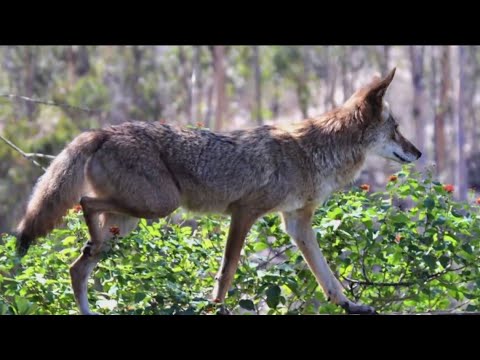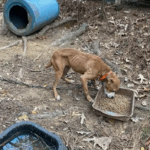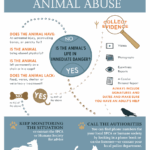In the sprawling tapestry of urban and suburban life, the appearance of a coyote can ignite a curious juxtaposition between wonder and fear, much like seeing a wildflower bloom in a concrete jungle. These resilient creatures, often misinterpreted as harbingers of doom, can invoke a flurry of reactions from residents who behold them in their neighborhoods. The pressing question arises: Should one really call 911 upon spotting a coyote, or is there a more nuanced approach to this intriguing situation?
To address this, it’s essential to understand the ecological role of coyotes. As opportunistic omnivores, these mammals regulate populations of rodents and other small wildlife, offering an often-unseen service to urban ecosystems. Their existence within city borders is not merely a happenstance but rather a reflection of their adaptive prowess. While they have evolved to thrive in various habitats, the proximity to human dwellings can lead to misunderstandings that prompt frantic phone calls to emergency services.
When a coyote wanders into suburban territory, some may liken it to an unexpected guest arriving at a formal dinner, causing a stir among the well-heeled attendees. It is vital to assess the context of the sighting. Is the coyote seemingly aggressive, or is it merely passing through on its daily foraging expedition? Observing the behavior is crucial; a coyote that appears calm and unbothered is typically no cause for alarm. The wild can be unpredictable, yet often, it is simply indifferent to the encroachments of civilization.
It is worth considering the alternatives before reaching for the phone to dial 911. Most municipalities advise residents to contact animal control or local wildlife agencies rather than emergency services when encountering wildlife. These specialized entities are equipped to handle the situation appropriately. They possess the knowledge to discern between a coyote that poses a genuine threat and one that is innocuously meandering through its newfound urban landscape.
Calling 911 for a coyote sighting can divert valuable resources away from genuine emergencies. Just as one would not summon a firefighter for a wayward squirrel, invoking emergency services for a coyote can be perceived as a misallocation of public safety efforts. Hence, an analytical approach is crucial, urging individuals to weigh the context of the sighting against the urgency of the response.
Nevertheless, understanding the unfortunate instances when coyotes may pose a risk is essential. The introduction of pets into the equation can alter the dynamics significantly. Coyotes, driven by instinct, may regard small animals as prey. In instances where a coyote is aggressive—exhibiting signs of persistent proximity or overt hostility—it becomes vital to utilize preventative measures. Maintaining a safe distance from the wild creature and ensuring pets are secured indoors can mitigate the risk. The importance of education surrounding wildlife behavior cannot be overstated; knowledge empowers communities to coexist with their wild counterparts harmoniously.
Furthermore, the conversation must extend to the allure of cohabitation with nature. Coyotes symbolize a connection to the untamed world, a reminder that wilderness envelops even the most manicured neighborhoods. Living alongside these creatures invites an opportunity for stewardship, wherein humans can actively participate in ensuring their survival while maintaining safety within our communities. This relationship fosters a unique symbiotic dynamic, where both human and wildlife can thrive, reminiscent of the age-old tale of coexistence that humans have shared with nature through the ages.
Moreover, community education programs can play an instrumental role in reshaping perceptions about coyotes. By informing residents about these animals’ behaviors and ecological significance, communities can foster an environment of acceptance rather than fear. Workshops, informational pamphlets, and community meetings can cultivate a culture of coexistence, empowering individuals to embrace the idea that a coyote in the neighborhood is not a symbol of danger, but rather a testament to the resilience of nature.
There is a delicate balance to maintain as well. While embracing the presence of wildlife, caution must prevail, ensuring that dangerous encounters remain minimal. Thus, understanding how to react if a coyote approaches becomes vital knowledge. Residents should be encouraged to stand tall, make noise, and wave their arms, reinforcing the message that human domains are not for coyotes. This approach empowers individuals, turning fear into action, ensuring boundaries remain respected.
In conclusion, encountering a coyote in your neighborhood raises more questions than it answers. Rather than reaching for a phone to dial 911, one should analyze the situation through an ecological lens. Is the coyote a threat or a simple acknowledgment of nature within urban life? This dynamic, a dance between civilization and the wild, deserves contemplation rather than immediate alarm. Understanding coyotes leads to a richer engagement with the environment, inviting a discourse about coexistence rather than conflict. Let us draw parallels to ancient wisdom, embracing the presence of these creatures as an opportunity for growth rather than fear, crafting a narrative that promotes safety alongside an enduring connection to the wilderness.






